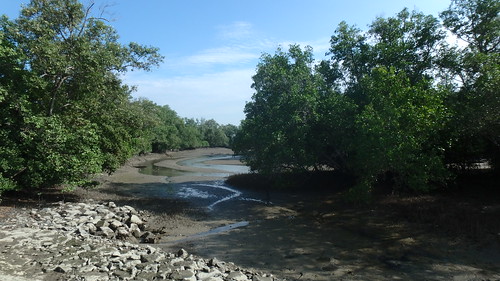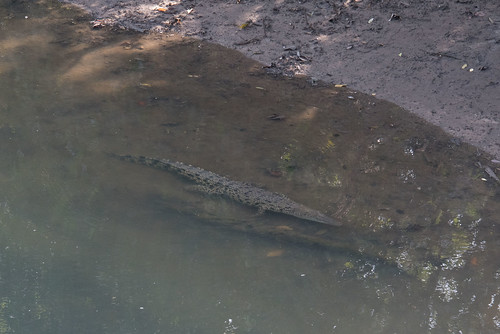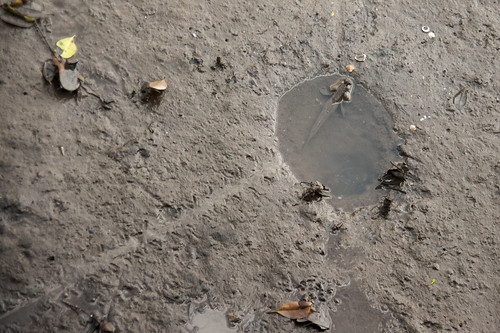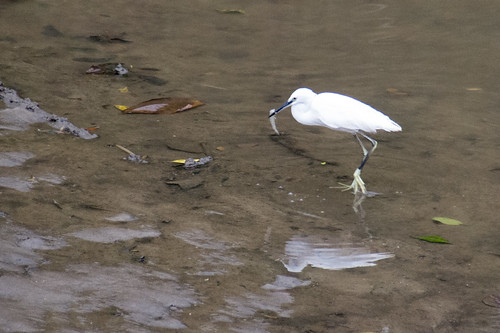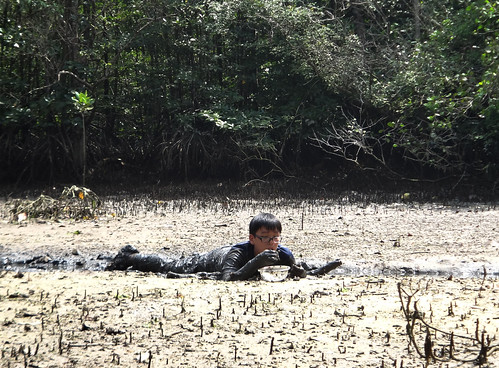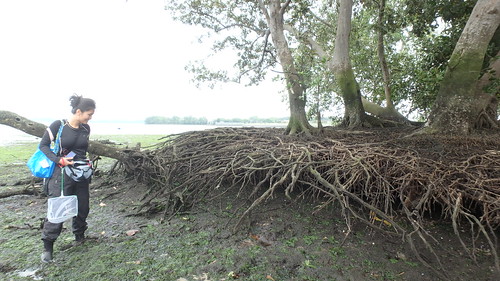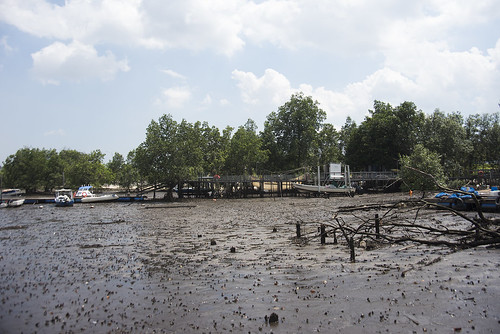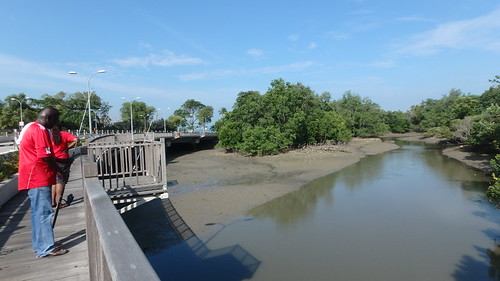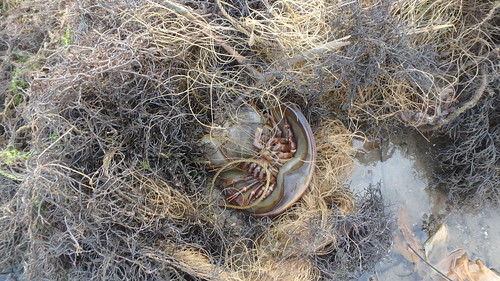Shorebirds gorge on them at low tide. At high tide, fishes swim in to gobble them up.
These in turn are hunted by crocodiles in the water, and eagles in the sky.
Abundantly stocked mudflats are vital 'fast food' stops for shorebirds. Especially migratory birds that travel thousands of miles. Without mudflats, these birds may die along the way.
Mudflats form as silt settles when currents slow down as a river reaches the sea. Especially in sheltered lagoons. Mangroves usually grow on the landward side of mudflats. The fine sediments create a layer that appears solid, but is actually super soft. To walk on mud at low tide, it's good to be a mudskipper!
Or have very long toes to distribute your weight across the soft mud, like the egret.
Humans are not very well adapted for working on mudflats. As volunteers discovered during the Mega Marine Survey to find out what lives in Singapore's mudflats. When it's too soft, you need to move on your knees to distribute your weight.
Sometimes, the only way to avoid sinking is to lie down!
Here's how muddy humans will get on some of Singapore's mudflats. Also called the Comprehensive Marine Biodiversity Survey, this Survey arose from the Singapore Blue Plan 2009 submitted during the previous International Year of the Reef 2008!
 |
| Drawing by Rene Ong. |
Threats to Singapore mudflats
Most of Singapore's mudflats were buried in reclamation, or converted for aquaculture. As Singapore's rivers were dammed to form reservoirs, Singapore's remaining mudflats were 'starved' of inflows of sediments from rivers. With less inputs of mud, the flats become vulnerable to erosion.
Mudflats to visit
Sungei Buloh Wetland Reserve's Mud Experience is designed specially for kids and the young-at-heart. To get a closer look at mud and even get your feet wet at high tide, if you like.
You can also view mudflats from many other places at Sungei Buloh Wetland Reserve. The Main Hide allows you a closer look at shorebirds feeding on the mudflats. On the Main Bridge at low tide you can see crocodiles and more. Elsewhere, look closely for little crabs and other critters.
Kampung at Seletar Dam is a series of houses on stilts with extensive wooden boardwalks over mudflats. The area is private property, so don't trespass. If you're friendly, they may let you in. There are some really huge mudskippers here. The vast mudflats on the seaward side are popular with shorebirds at low tide.
Changi Creek boardwalk along Telok Paku Road-Nicoll Drive takes you along a tiny sliver of mangroves and magnificent mudflats. At low tide, get a glimpse of large frolicking mudskippers. At high tide, see fishes in the water. If you're lucky, you might spot otters.
Kranji mudflats: To visit, join the regular Horseshoe Crab Research and Rescue effort by the Marine Conservation Group, Nature Society (Singapore). Help release horseshoe crabs trapped in nets and learn more about our mudflats and mangroves.
Tell us YOUR adventures on the mudflats of Singapore!
This article is written for Celebrating Singapore Shores as part of International Year of the Reef 2018.

